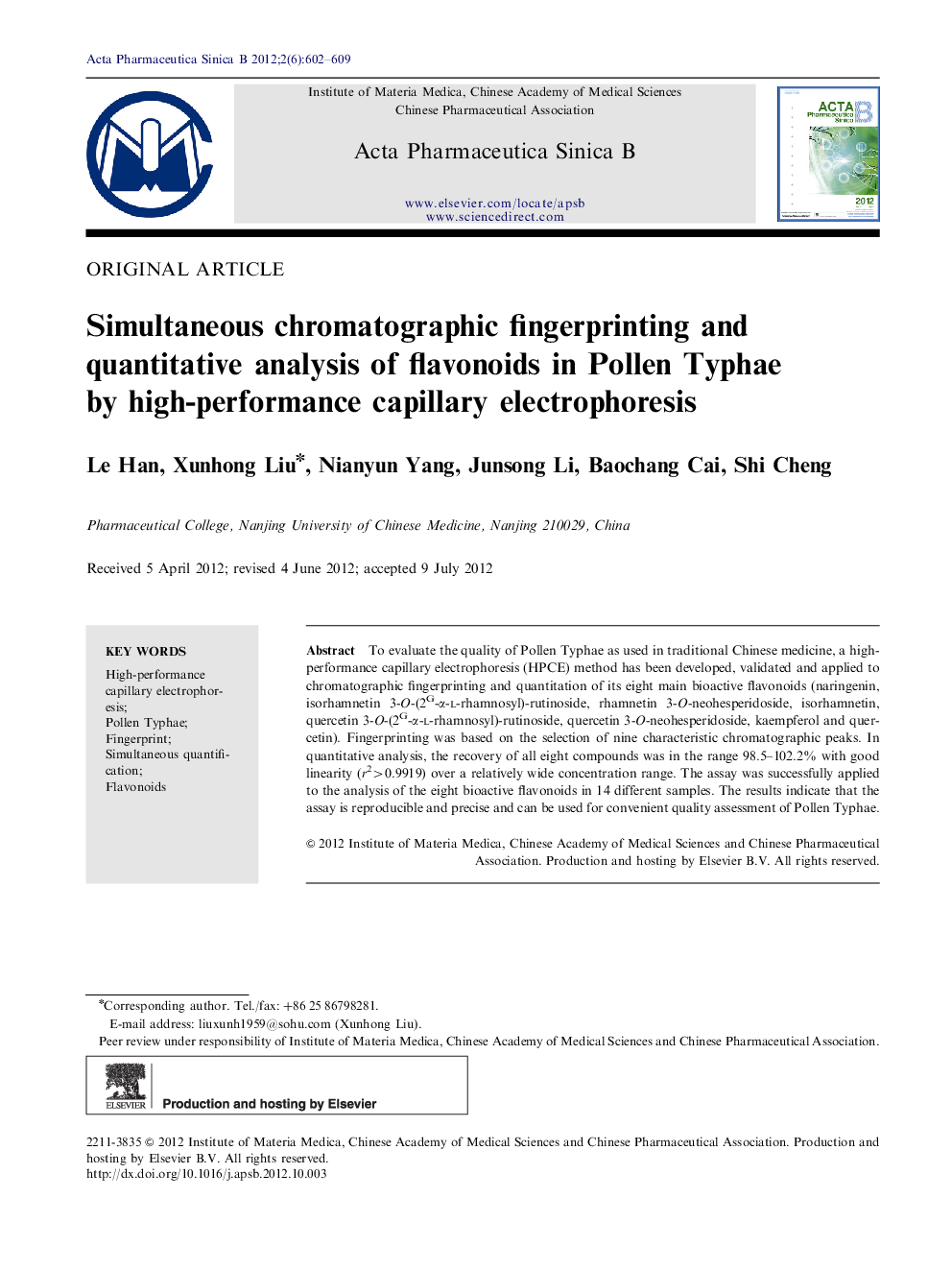| Article ID | Journal | Published Year | Pages | File Type |
|---|---|---|---|---|
| 2474705 | Acta Pharmaceutica Sinica B | 2012 | 8 Pages |
To evaluate the quality of Pollen Typhae as used in traditional Chinese medicine, a high-performance capillary electrophoresis (HPCE) method has been developed, validated and applied to chromatographic fingerprinting and quantitation of its eight main bioactive flavonoids (naringenin, isorhamnetin 3-O-(2G-α-l-rhamnosyl)-rutinoside, rhamnetin 3-O-neohesperidoside, isorhamnetin, quercetin 3-O-(2G-α-l-rhamnosyl)-rutinoside, quercetin 3-O-neohesperidoside, kaempferol and quercetin). Fingerprinting was based on the selection of nine characteristic chromatographic peaks. In quantitative analysis, the recovery of all eight compounds was in the range 98.5–102.2% with good linearity (r2>0.9919) over a relatively wide concentration range. The assay was successfully applied to the analysis of the eight bioactive flavonoids in 14 different samples. The results indicate that the assay is reproducible and precise and can be used for convenient quality assessment of Pollen Typhae.
Graphical abstractA validated high-performance capillary electrophoresis (HPCE) method has been developed for quality assessment of Pollen Typhae by chromatographic fingerprinting and quantitation of its eight main bioactive flavonoids.Figure optionsDownload full-size imageDownload as PowerPoint slide
